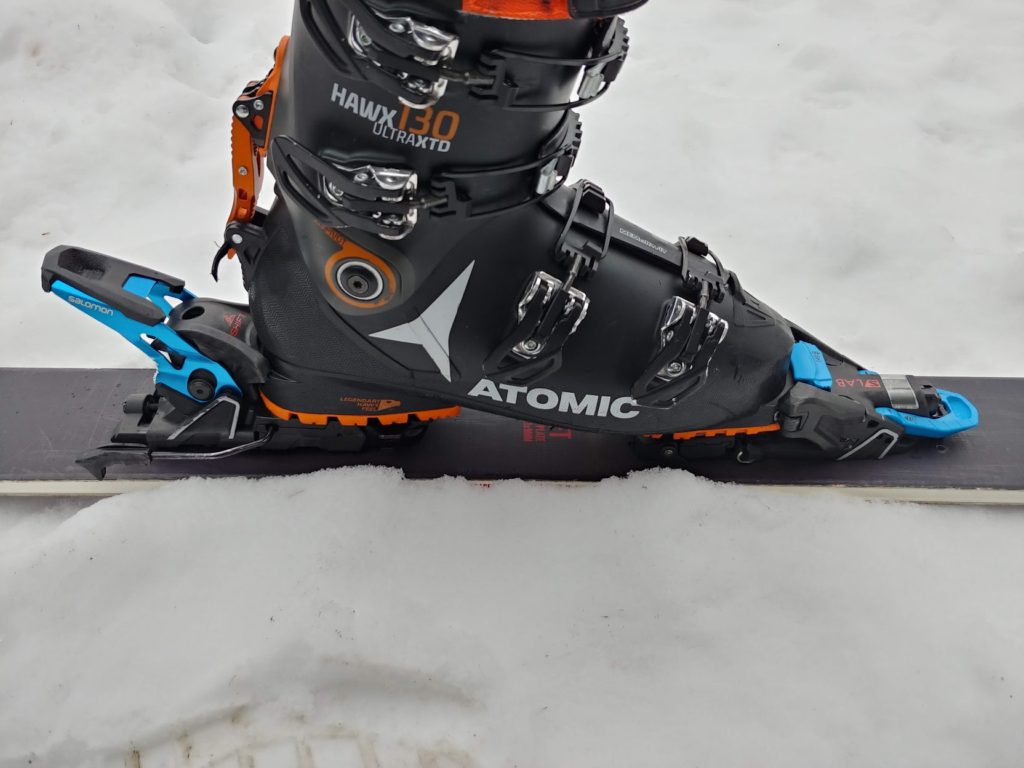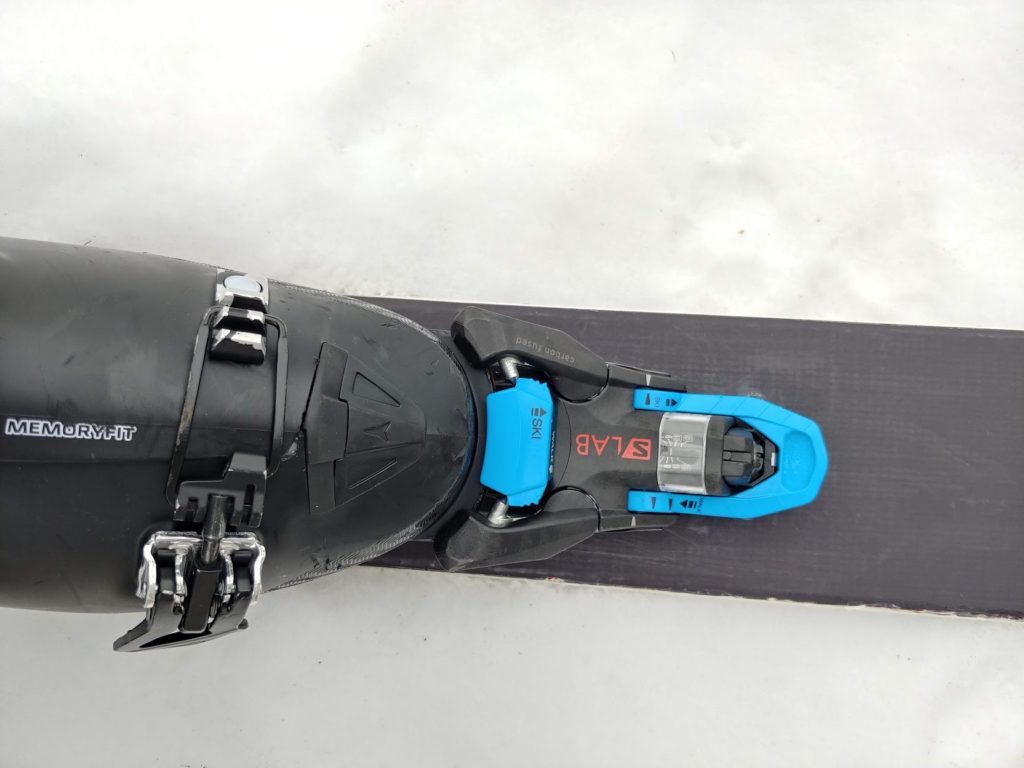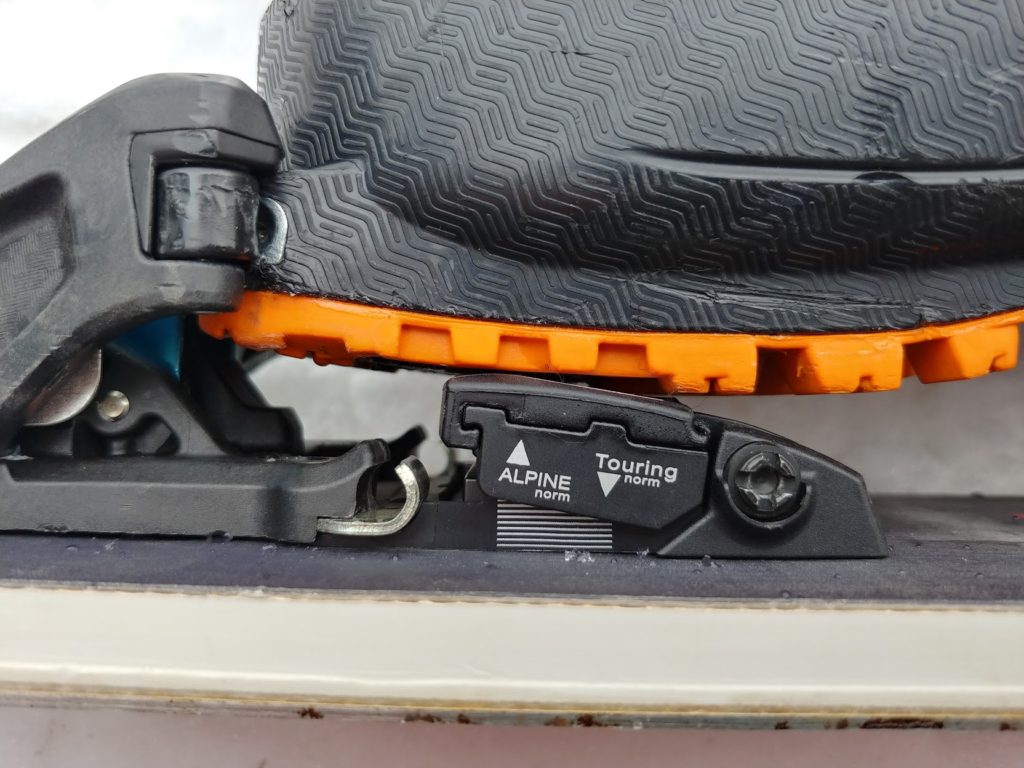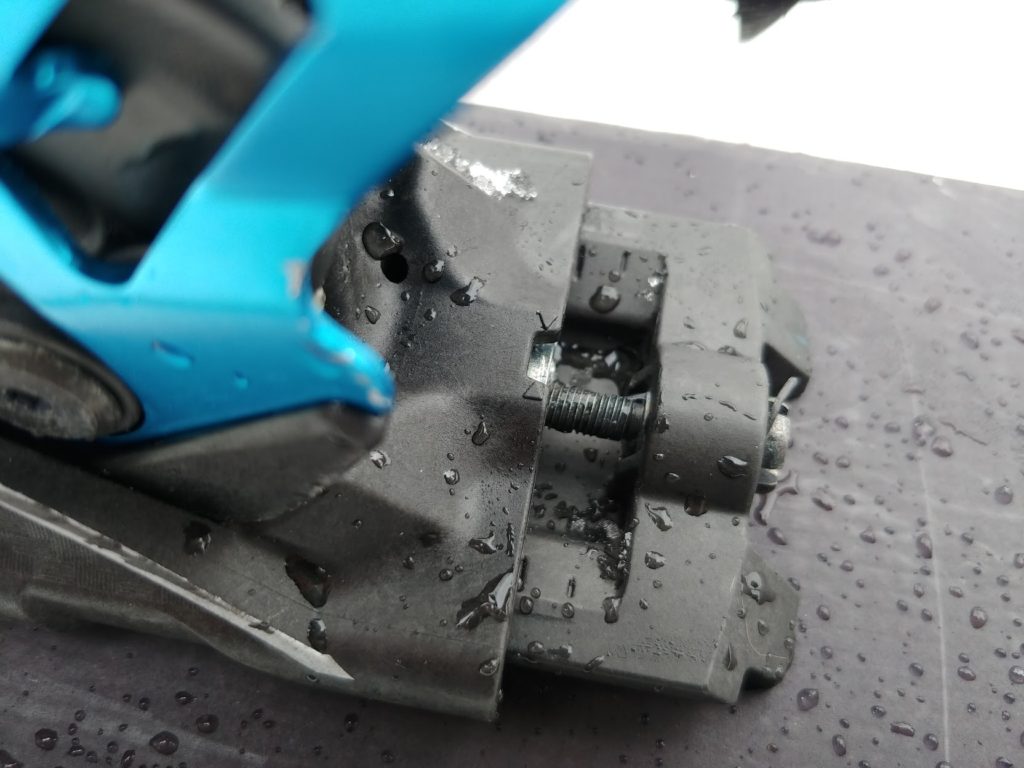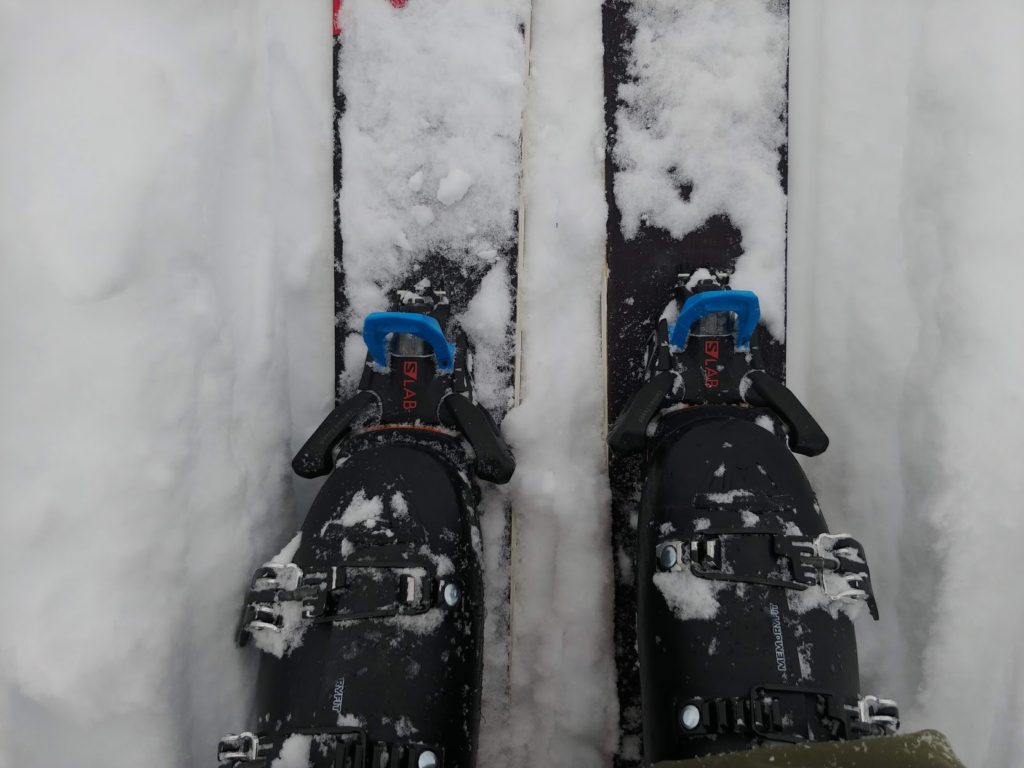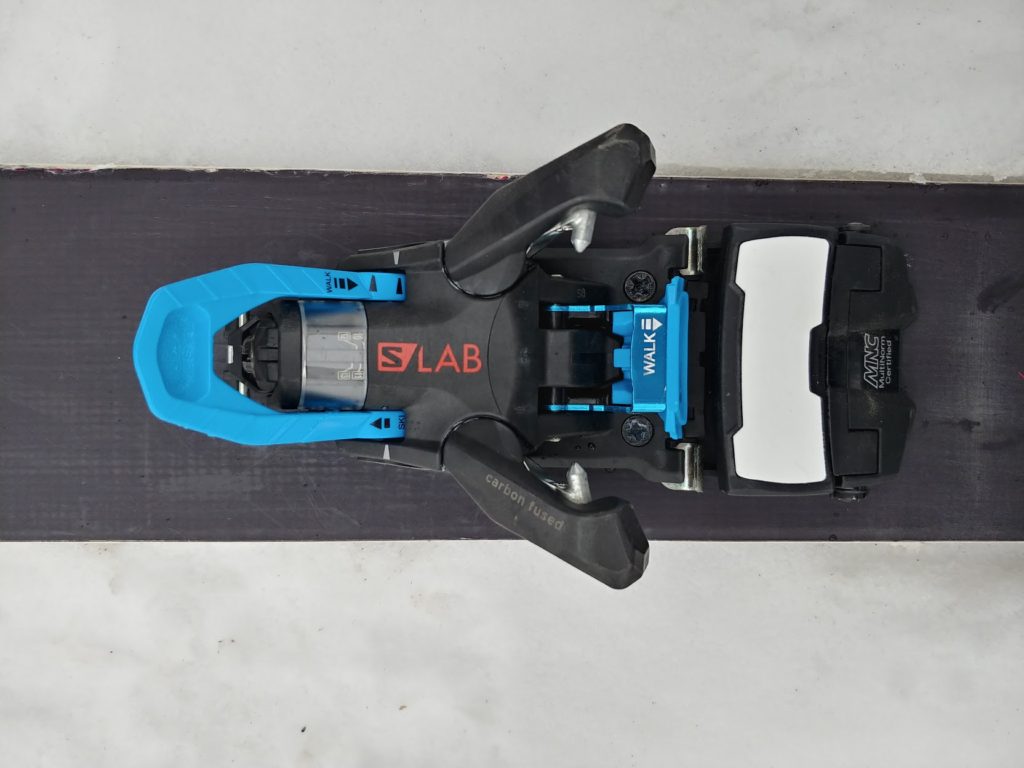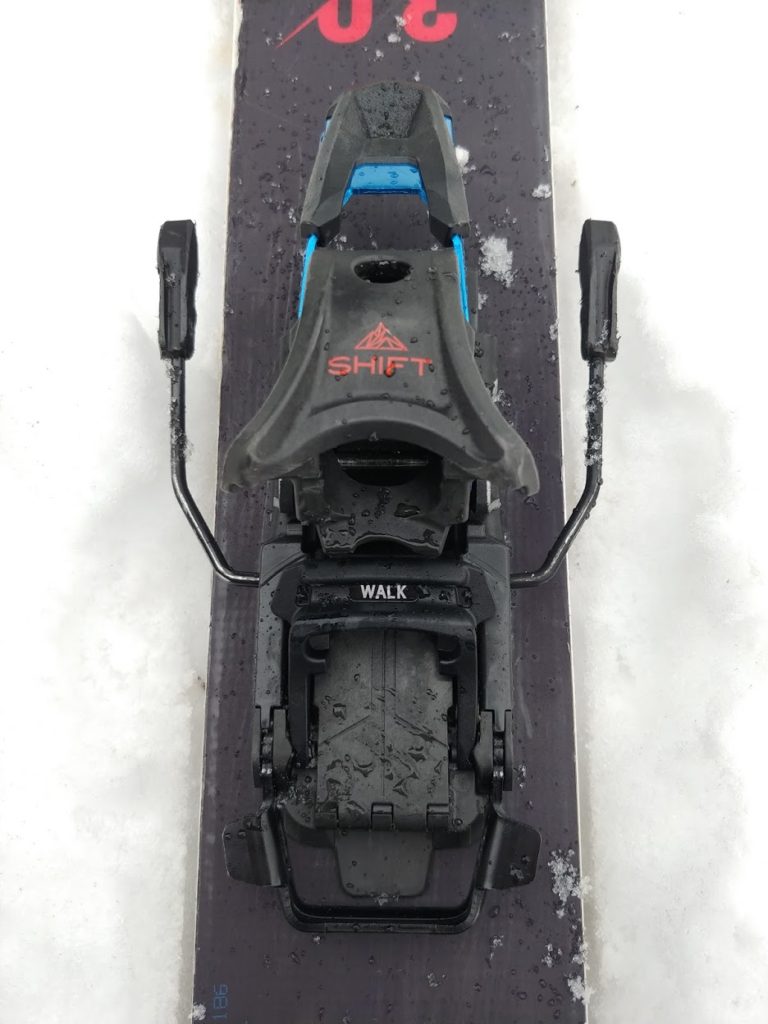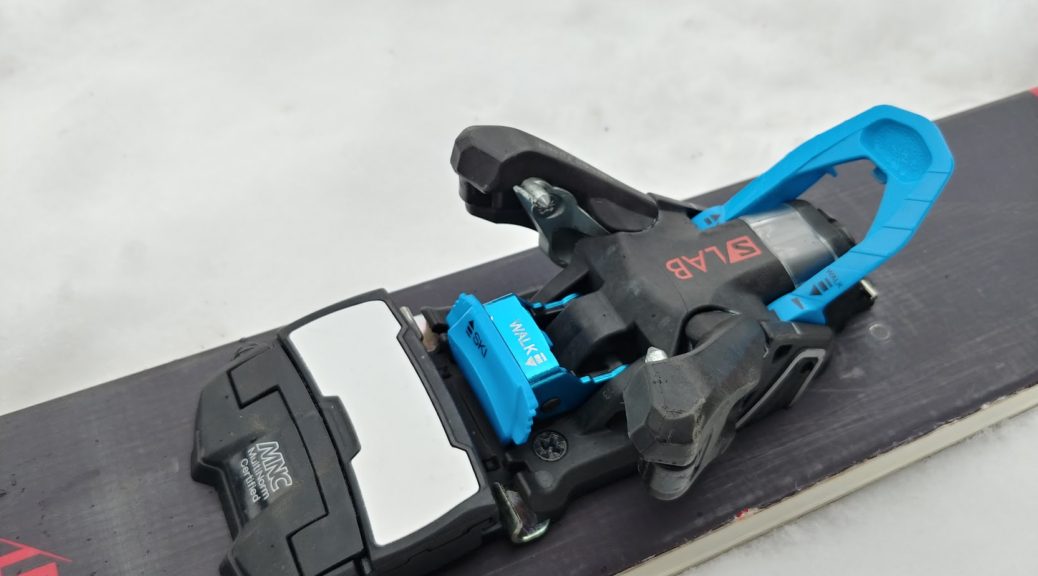
Salomon S/Lab Shift MNC 13: The Ultimate Resort/Touring Binding?
I finally got to spend some time skiing and touring in the Salomon S/Lab Shift MNC 13 this season. Minds were blown when this binding was announced with its radical new design combining pins for touring with an alpine style toe and heel. But has it lived up to the hype? It isn’t perfect, but it’s pretty damn close. It tours like a tech binding (a heavy one, to be fair) but skis a lot like a high quality alpine binding.
The S/Lab Shift isn’t aimed to be a super-light binding for the biggest missions of the season. It’s for days when you want to huck something big in the backcountry and don’t want to break your tech bindings, or days where you will be skiing both resort and a bit of backcountry. It’s also well-suited to be the binding for a one-ski quiver setup. Read on to find out more about its strengths and weaknesses.
Summary

MSRP: $599
DIN Range: 6-13
Weight (with brakes): 885 grams (1 lb 15 oz) per binding, 1.8 kg (3 lbs 14 oz) per pair
Risers: 2, 10 degrees
Elasticity (toe): 47 mm
Elasticity (heel): 9 mm
Boot Compatibility*: Alpine, Touring, WTR, Gripwalk, DIN
*touring mode only supports tech toes
Buy Now: Backcountry.com, evo.com, REI.com, Amazon
What’s revolutionary about the Shift (I’m abbreviating from the full S/Lab Shift MNC name) is the transformer-inspired toe. In ski mode, it looks fairly similar to an alpine toe with wings to keep your toe in place. But flip the ski/walk switch and you’ll see tech pins emerge, seemingly out of nowhere. Push and hold the ski/walk lever down with your pole to expand the toe pins, and you can click your boot into touring mode.
To accommodate a variety of boot sole types, there is a sliding and height-adjustable AFD. The Shift will work with everything from standard alpine boots to full-on touring boots. Speed toes (like those found on the Hoji) are not compatible – they don’t have a ‘lip’ on the toe that will work in the alpine style Shift toe.
The heel is a lightweight, alpine-style heel with one addition: a lever to lock the brake while touring. The heel itself doesn’t move, spin or slide out of the way when touring. When you click into the toe pins for touring mode, the boot is far enough forward that it clears the heel for touring.
At 885 grams per binding, they’re slightly heavier than the Marker Kingpin or the Fritschi Tecton but the S/Lab Shift has an advantage in the toe piece. Both the Kingpin and the Tecton use pins in the toe for ski-mode while the Shift transforms into an alpine style toe with much more elasticity for a smoother ride.
Downhill Performance
Alpine bindings typically have one huge advantage over tech bindings – elasticity. In layperson’s terms, elasticity means that a binding allows the toe or heel of your boot to move just a bit without releasing fully. A bit like an elastic band stretches and springs back without breaking. This provides a less harsh-feeling ride when you’re skiing. Instead of every bump and movement being directly transferred to your boot, a binding with elasticity can absorb those impacts a bit.
Traditional tech bindings have little to no elasticity, and especially on hard snow, can feel a bit harsh. You feel very directly ‘connected’ to these bindings, but sometimes in a bad way. Long story short, Salomon has created a touring binding that has a fair bit of elasticity. Compared to a tech binding on hard snow, they feel flipping amazing. I wouldn’t say they’re quiiiiite on par with a Look Pivot, for example, but they aren’t far off. The Pivot has way more elasticity in the heel. That said, they ski very well and when skiing at the resort I haven’t had to hold back at all, even on hard pack groomers. They feel much more like an alpine binding than a touring binding.
Some of you are probably saying ‘Yeah yeah, but the Duke and Guardian ski really well too!’ True, but the Shift has two advantages aside from the obvious of pins advantages in touring mode. The stack height (the height above the ski) is way lower on the Shift and they’re a hell of a lot lighter.
Issues and Minor Gripes
Quite a few people are having setup issues with the Shift, but it seems that in many many cases this is down to user error. Not even skier error, but in some cases I’ve seen Shift bindings set up incorrectly by the shop. The height adjustable AFD (anti-friction device) is one problem – many skiers have found that it develops slop after a while.
What I’ve found works for me is to adjust it so that the AFD is just barely touching the boot sole while making sure that the top of the boot toe is firmly touching the underside of the toe wings. I haven’t had a single issue all season. Note that the height adjustment isn’t a continuous scale – it’s stepped. What happens to many people is they adjust it so that it’s just barely on the next ‘step’, but it ends up backing off to the next step down.
Another common complaint is pre-releasing from the heel. I had one unwanted release at the heel early this season, but since raising my DIN value one notch they’ve been perfect. This wasn’t surprising – most bindings I run with the release set at 9, but in Salomon STH bindings I have to run 10 in the heel or I walk out of them on hard landings. Same deal with the Shift.
Pre-releasing can also be caused by incorrectly set forward pressure. The images provided by Salomon in the tech manual aren’t great, but the general consensus is that the metal indicator should be just past flush with the arrows in the heel piece. As in slightly tighter than flush. This is the advice I followed and have had zero issues.
***Use all of this advice at your own risk. I’m not a tech and not endorsed by Salomon, but have read and seen what works and what doesn’t.***
Touring Performance
As I mentioned earlier, these aren’t super-lightweight tech bindings for 10,000 foot days. I’m sure someone has done that in the Shifts, but I bet they didn’t have a great time. The Shift is a burly binding that uses tech pins for an efficient stride and a combination of aluminum and carbon-infused plastic to save some weight.
So I wasn’t expecting these to feel like feathers on my feet. I’ve toured in frame bindings (Fritschis, Dukes, Barons), and let me tell you, the Shift is a way better option. The stride feels very similar to a traditional tech binding and they don’t feel overly heavy. In terms of weight, they’re a good middle ground between light tech bindings and frame bindings.
Getting into touring mode requires pushing and pulling a few levers, but is pretty simple once you’ve done it once or twice. First the toe. Pull down on the central blue lever that sits in between the toe wings until the toe wings expand.
Then on the heel, flip the brake retention lever from ski to walk to prepare to “lock” the brakes in place (the quotes are there for a reason…read the section below, Touring Mode Complaints, to find out why).
Push down on the blue toe lever with your pole to expand the toe wings, line up your boot with the pins and release the lever. Pull up on the blue lever (hard!) until it clicks – this locks the toe pins for touring mode.
Finally, stomp on the brake retention lever to lock the brakes. You can also do this by hand before clicking into the toe if you prefer.
Here’s a video from Salomon showing the transition to tour mode:
Touring Mode Complaints
Touring in the S/Lab Shift is pretty good for the most part. The stride feels nice and natural and the bindings are quite light for a beefy touring binding. But there are some downsides that I need to point out. It’ll depend on your preferences whether these cons outweigh the excellent downhill performance of the Shift.
Brake retention – this is mediocre. Some days the brakes stay up for the whole hike, and some days they just keep snapping into ski mode. In deeper snow, I seem to get buildup somewhere under the brake retention lever. Cleaning it out seems to help, but this could definitely be improved. It’s quick to put them back in walk mode, but this can get annoying.
Riser – there is only one, medium height riser. On steep skin tracks this isn’t ideal, but not the end of the world. If you’re the kind of skier that absolutely needs a high riser, you’ll be disappointed. On the upside, it’s pretty easy to grab and flip up or down with a pole handle.
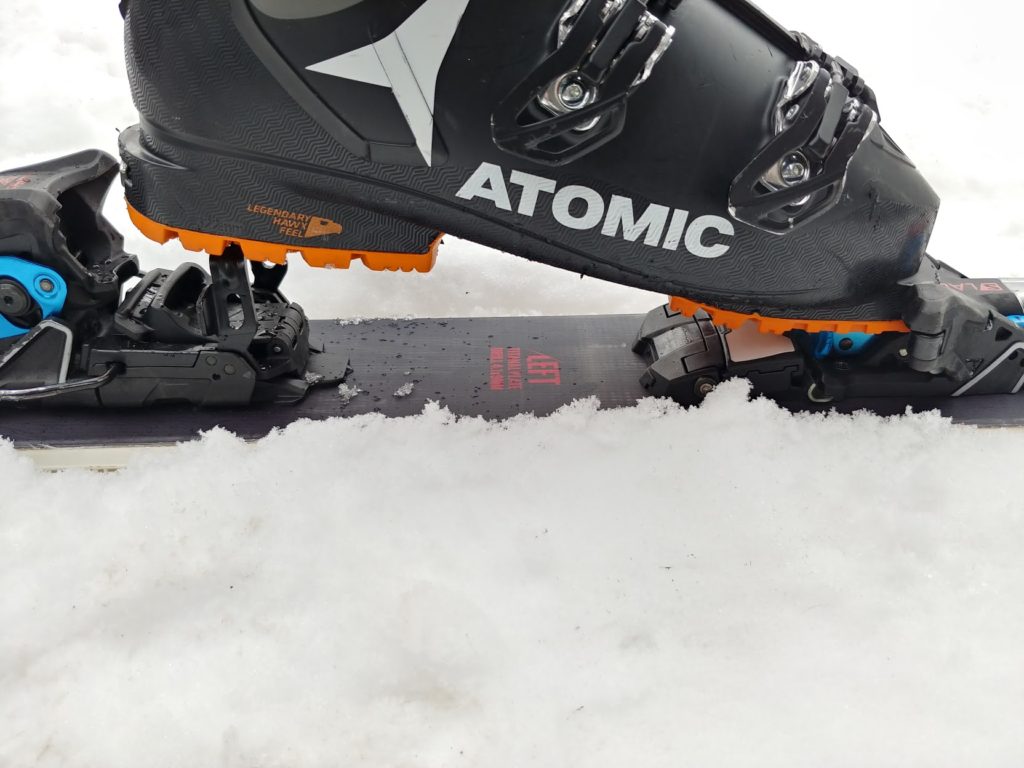
Ski/Walk Lever – very minor complaint, but at first this thing was almost impossible to lock into walk mode. It’s ‘worn in’ a bit, but still requires a fairly firm tug.
Closing Thoughts
As a hybrid touring/resort binding, the Salomon S/Lab Shift MNC 13 brings some heat to the competition. With more toe elasticity (but also a bit more weight) than the Kingpin or the Tecton, it’s a little more downhill oriented than either of those bindings. It skis extremely well for a hybrid binding, and is no slouch when it comes to touring either. This would be an excellent binding for a dedicated 50/50 resort/touring setup or as a binding on a ski that will be used mainly for resort skiing with a bit of slack country. That’s how I’ve been using it, and have been very satisfied with it.
The brakes popping open when touring can be a bit annoying, but for me the downhill performance outweighs the minor cons of the Salomon S/Lab Shift bindings. Make sure your Shifts are set up correctly and they’ll treat you well.
